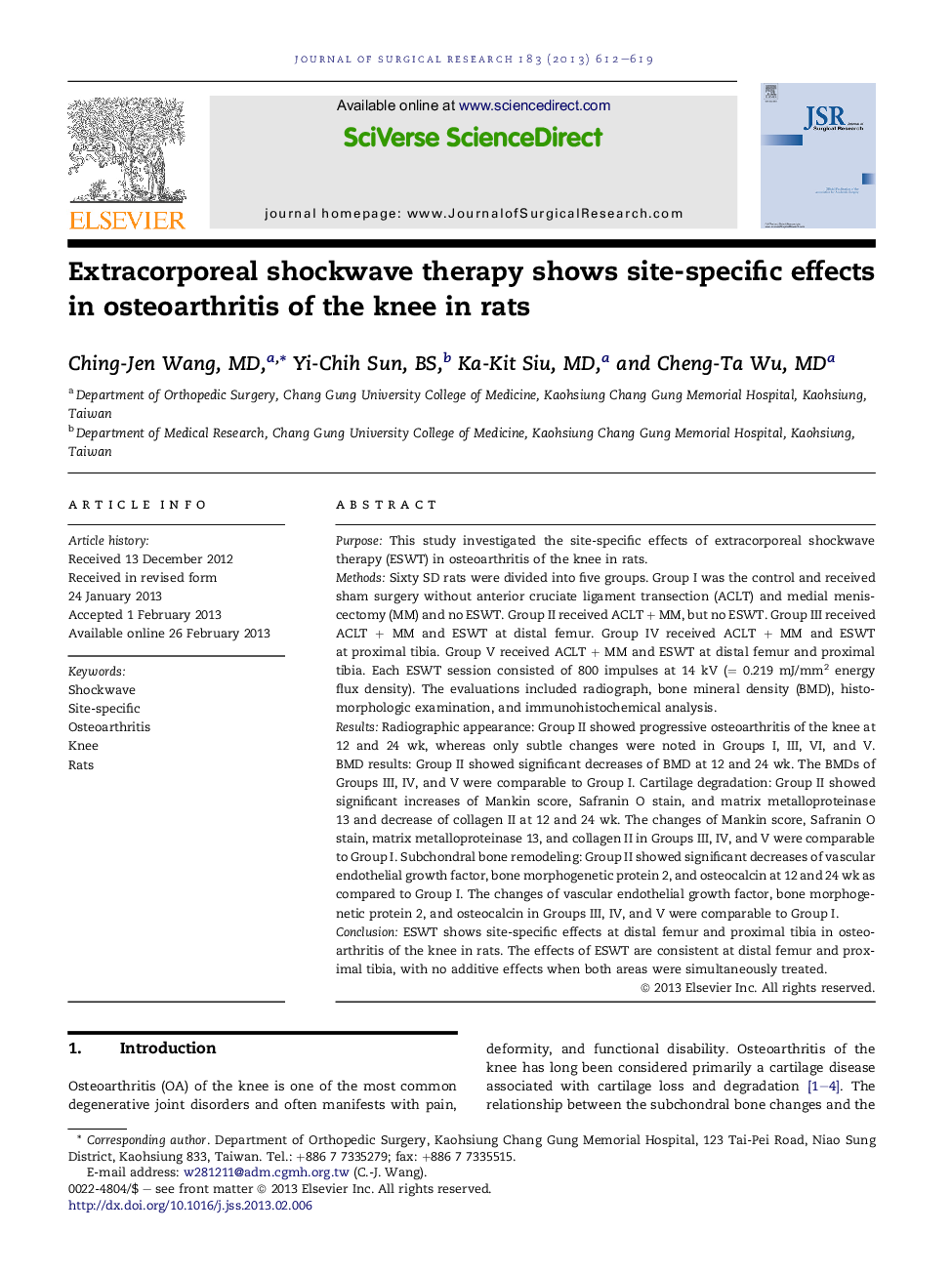| Article ID | Journal | Published Year | Pages | File Type |
|---|---|---|---|---|
| 4300869 | Journal of Surgical Research | 2013 | 8 Pages |
PurposeThis study investigated the site-specific effects of extracorporeal shockwave therapy (ESWT) in osteoarthritis of the knee in rats.MethodsSixty SD rats were divided into five groups. Group I was the control and received sham surgery without anterior cruciate ligament transection (ACLT) and medial meniscectomy (MM) and no ESWT. Group II received ACLT + MM, but no ESWT. Group III received ACLT + MM and ESWT at distal femur. Group IV received ACLT + MM and ESWT at proximal tibia. Group V received ACLT + MM and ESWT at distal femur and proximal tibia. Each ESWT session consisted of 800 impulses at 14 kV (= 0.219 mJ/mm2 energy flux density). The evaluations included radiograph, bone mineral density (BMD), histomorphologic examination, and immunohistochemical analysis.ResultsRadiographic appearance: Group II showed progressive osteoarthritis of the knee at 12 and 24 wk, whereas only subtle changes were noted in Groups I, III, VI, and V. BMD results: Group II showed significant decreases of BMD at 12 and 24 wk. The BMDs of Groups III, IV, and V were comparable to Group I. Cartilage degradation: Group II showed significant increases of Mankin score, Safranin O stain, and matrix metalloproteinase 13 and decrease of collagen II at 12 and 24 wk. The changes of Mankin score, Safranin O stain, matrix metalloproteinase 13, and collagen II in Groups III, IV, and V were comparable to Group I. Subchondral bone remodeling: Group II showed significant decreases of vascular endothelial growth factor, bone morphogenetic protein 2, and osteocalcin at 12 and 24 wk as compared to Group I. The changes of vascular endothelial growth factor, bone morphogenetic protein 2, and osteocalcin in Groups III, IV, and V were comparable to Group I.ConclusionESWT shows site-specific effects at distal femur and proximal tibia in osteoarthritis of the knee in rats. The effects of ESWT are consistent at distal femur and proximal tibia, with no additive effects when both areas were simultaneously treated.
